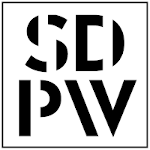Wykaz obszarów badawczych:
| Obszar badawczy | Dziedzina naukowa |
1) The problem of the synthesis of the impedance of a passive one-port is a classic problem of circuit theory. The known solutions assume either obtaining a canonical structure with a minimum number of elements, but requiring the use of perfectly coupled inductances, or a structure without such inductances, but with the number of elements growing exponentially with the impedance order. Both approaches are not very practical. The research area proposed to the PhD student is an attempt to find a transformer-less structure with a significantly fewer elements than in existing solutions, or to prove (or verify) that such structures do not exist (which has been recently checked for low-order impedances). This very ambitious task carries a high risk, as the problem has not been solved for several decades. Therefore, the problem can be reduced to the "brute force" verification of all possible low order impedance structures, but with the order higher than this discussed to date in the literature. Possible implementation of the "brute force" method could utilize computations on a quantum computer. 2)The research area includes the automatic generation of all possible combinations of a certain number of passive elements as well as nullators and norators as models of active elements. The created structures are then automatically verified in terms of the feasibility of the implemented system functions. For this purpose, it is planned to use oriented nulators and norators, which have not been used so far in the context of circuit synthesis. For structures obtained with this method, realizations utilizing standard active elements (such as bipolar and field-effect transistors, operational and transconductance amplifiers, amplifiers with current coupling, etc.) will be proposed, presumably taking into account the specific features of the individual types of active elements used in a given structure. Selected circuits will be tested using computer simulations and then practically implemented and measured in laboratory conditions
|
Automation, Electronics, Electrical Engineering and Space Technologies |
|---|
